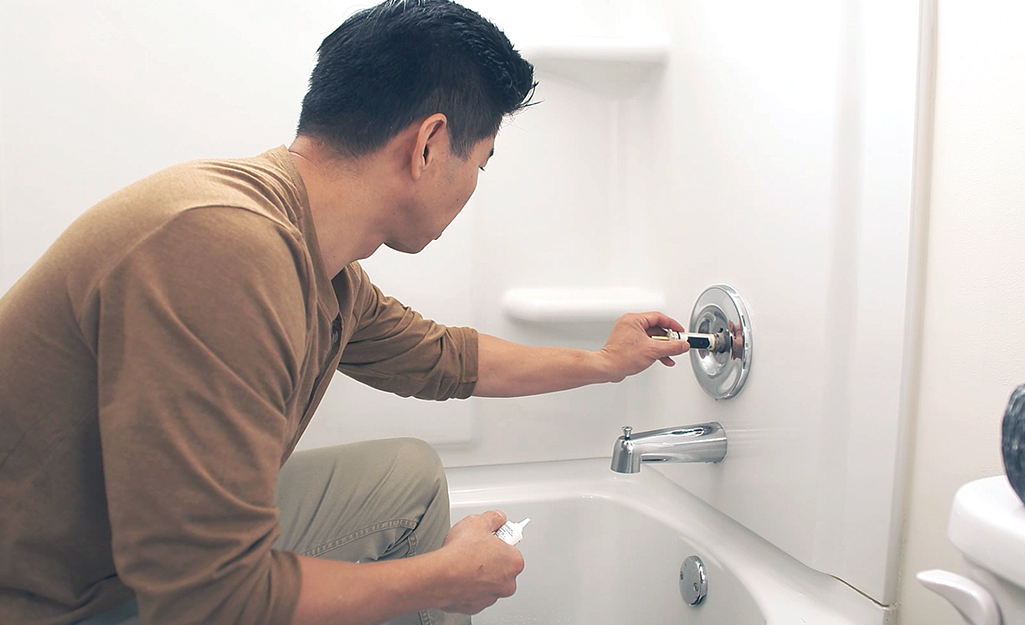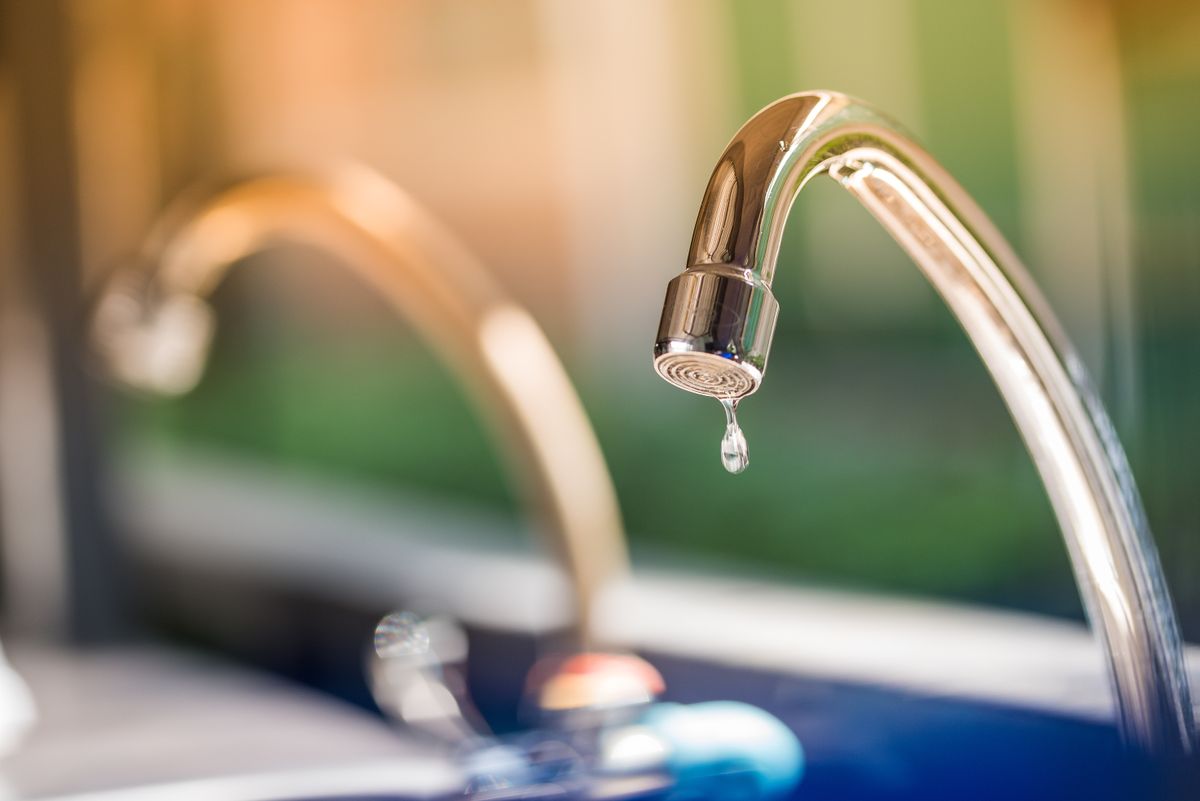My Factors Behind Resolving a Broken Faucet
My Factors Behind Resolving a Broken Faucet
Blog Article
We have encountered this great article relating to Water Dripping from Faucet: Why and How to Fix down the page on the web and thought it made perfect sense to share it with you here.

Trickling taps might look like a minor hassle, but their effect exceeds just the nuisance of the sound. From drainage to incurring unneeded economic costs and health threats, disregarding a trickling tap can cause different consequences. In this article, we'll look into why it's vital to address this common home issue promptly and effectively.
Wastefulness of Water
Ecological Impact
Dripping taps contribute significantly to water wastefulness. According to the Epa (EPA), a solitary faucet dripping at one drip per second can waste greater than 3,000 gallons of water per year. This not just stress water resources but also impacts ecological communities and wildlife based on them.
Step-by-Step Guide to Taking Care Of a Dripping Tap
Tools Required
Before trying to fix a dripping faucet, gather the necessary devices, including an adjustable wrench, screwdrivers, replacement parts (such as washers or cartridges), and plumber's tape.
Usual Tap Issues and Their Solutions
Recognize the kind of faucet and the details issue triggering the drip. Common issues consist of worn-out washing machines, corroded shutoff seats, or malfunctioning O-rings. Refer to supplier directions or on the internet tutorials for detailed assistance on repair work.
Financial Prices
Enhanced Water Bills
Past the environmental effect, trickling taps can inflate water bills significantly. The built up wastage with time translates into greater utility expenditures, which could have been prevented with timely fixings.
Possible Residential Property Damage
In addition, long term trickling can bring about damage to fixtures and surface areas bordering the faucet. Water accumulation can create discoloration, deterioration, and also architectural problems if left ignored, causing additional repair service costs.
Health and wellness Problems
Mold and Mold Development
The continuous visibility of wetness from a leaking tap develops an optimal atmosphere for mold and mold growth. These fungi not only jeopardize indoor air top quality yet additionally position health and wellness dangers, particularly for individuals with respiratory system problems or allergic reactions.
Waterborne Conditions
Stationary water in dripping taps can come to be a breeding place for bacteria and various other virus, enhancing the threat of waterborne illness. Impurities such as Legionella microorganisms flourish in stagnant water, possibly causing serious diseases when consumed or breathed in.
Do it yourself vs. Professional Repair work
Benefits and drawbacks of Do It Yourself Fixing
While some might attempt to deal with a trickling tap themselves, do it yourself repairs come with their own set of challenges. Without correct expertise and tools, do it yourself efforts can aggravate the issue or bring about insufficient repair work, extending the trouble.
Advantages of Employing a Professional Plumber
Working with an expert plumber ensures that the underlying root cause of the trickling faucet is addressed effectively. Plumbing technicians possess the know-how and equipment to detect and repair tap issues efficiently, conserving time and minimizing the risk of additional damages.
Ecological Responsibility
Individual Contribution to Conservation
Taking duty for repairing dripping taps aligns with more comprehensive initiatives toward water conservation and ecological sustainability. Every person's actions collectively make a significant effect on preserving precious sources.
Sustainable Living Practices
By prioritizing prompt repairs and adopting water-saving routines, people contribute to lasting living methods that profit both existing and future generations.
Safety nets
Normal Upkeep Tips
To prevent leaking taps, perform routine maintenance such as cleaning up aerators, checking for leaks, and changing worn-out components immediately. In addition, think about mounting water-saving gadgets or updating to a lot more efficient fixtures.
Significance of Prompt Services
Attending to leaking faucets as quickly as they're noticed protects against additional water wastefulness and prospective damage, ultimately conserving both water and cash over time.
Influence On Home Value
Assumption of Well-Maintained Building
Keeping a home in good condition, including attending to maintenance issues like dripping taps, boosts its perceived worth and desirability amongst prospective customers or tenants.
Impact on Resale Worth
Qualities with well-kept plumbing fixtures, consisting of taps, command higher resale worths in the real estate market. Addressing leaking faucets can add to a positive perception during residential property evaluations and arrangements.
Conclusion
Attending to a dripping faucet surpasses plain benefit; it's a crucial step toward preserving water, reducing financial expenses, and guarding wellness and home. Whether with do it yourself fixings or professional assistance, taking action to fix dripping faucets is a small yet impactful way to promote responsible stewardship of resources and contribute to a healthier, more lasting future.
Most Common Reasons for a Leaky Faucet and How to Stop the Drip
Whether it’s your kitchen faucet leaking or a bathroom faucet leaking, one leaky faucet can waste anywhere from three to 30 gallons of water every single day. If the constant drip-drip-drip doesn’t get your attention, your water bill will. The good news is that, by following a few simple steps, chances are pretty good you can fix the problem yourself.
Why is it dripping?
Before you start taking things apart, let’s break down some of the most common causes of a leaky faucet.
Bad O-ring.
A cartridge is a valve that controls the flow of water into the faucet spout. On cartridge faucets there’s an O-ring—the little disc attached to the stem screw that holds the faucet handle in place. If it’s loose or worn-out, it can cause your sink handle to leak. Of course, the cartridge itself could be worn out. If that’s the case, make sure you replace it with the exact same kind.
Corroded valve seat.
The valve seat connects the faucet and the spout. If the leak seems to be coming from the spout, it might be because a buildup of water sediment has corroded the valve seat.
Worn-out washers or seals.
A leaky spout could be caused by a bad washer that rests against the valve seat. It’s just a matter of time before friction takes its toll. It could also be the wrong size washer or one that’s been installed incorrectly. Water sediments can also corrode inlet and outlet seals.
Water pressure.
If the faucet only drips now and then, or when you turn the handles a certain way, you should probably check your home’s water pressure.
Loose or broken parts.
The adjusting ring and packing nuts in the stream screw can become loose over time, causing your sink handle to leak. Try tightening or replacing the packing nut. If the leak is coming from the pipes underneath the sink, you probably have a broken pipe or fitting. If that’s the case, you should definitely call a plumber.
Know your faucet.
Faucets come in a variety of types. Each one has its own assembly—and its own possible causes of leaks. Learning about the four most common kinds of faucets will help you know how to take them apart and make any repairs.
How to stop a leaky faucet
Fixing that leaky faucet doesn’t have to take a lot of time, money, or expertise. It’s usually a simple matter of replacing a worn-out washer or gasket, a loose O ring, or another part. Chances are really good you can do this yourself if you follow these simple steps.
Shut off the water.
Before you tackle the faucet, cut off the water supply to the sink. There should be one valve for hot and one for cold. Hand-turn them clockwise with your hands till they close. If there are no valves under the sink, head to the basement and shut off the main water supply to the house. Then turn on the faucet until it empties out the water that’s still in the line and you’re ready to start. It’s a good idea to cover the sink drain with a plug or a rag so you don’t lose any small pieces and parts while you’re working.

I was guided to that report on What Causes Leaky Faucets & How To Fix Them through an associate on another site. Liked our write up? Please quickly share it. Let someone else locate it. Many thanks for your time. Kindly visit our site back soon.
Report this page